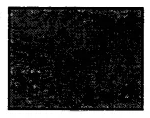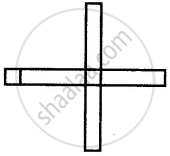Advertisements
Advertisements
प्रश्न
Using Euler’s formula, find the unknown.
| Faces | ? | 5 | 20 |
| Vertices | 6 | ? | 12 |
| Edges | 12 | 9 | ? |
उत्तर
By Euler’s formula, we have
F + V − E = 2
(i) F + 6 − 12 = 2
F − 6 = 2
F = 8
(ii) 5 + V − 9 = 2
V − 4 = 2
V = 6
(iii) 20 + 12 − E = 2
32 − E = 2
E = 30
Thus, the table can be completed as
| Faces | 8 | 5 | 20 |
| Vertices | 6 | 6 | 12 |
| Edges | 12 | 9 | 30 |
APPEARS IN
संबंधित प्रश्न
The given Figure are prisms or not?

How are pyramids and cones alike?
Can a polyhedron have 10 faces, 20 edges and 15 vertices?
Verify Euler's formula for the following polyhedron:

Dice are cubes where the numbers on the opposite faces must total 7. Which of the following are dice?

If a polyhedron has 10 faces and 8 vertices, find the number of edges in it.
The figure, given below, shows shadows of some 3D object when seen under the lamp of an overhead projector:

A rectangle
In this case, name the object.
The following figure represent the nets of some solid. Name the solid

The following figure, given below, shows shadows of some 3D object when seen under the lamp of an overhead projector:

The number of edges in a parallelogram is 4.
